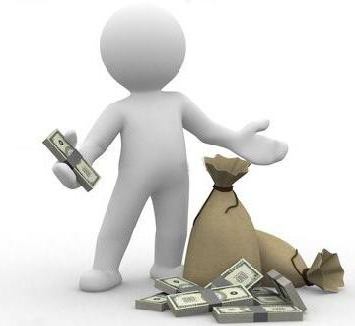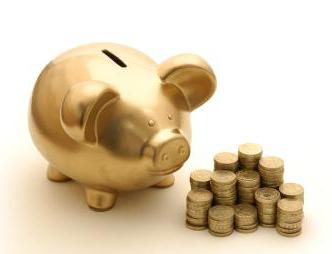All sciences on economic development consider the organization’s net worth as an integral part of the reproduction process. The authors of all theories recognize its decisive role in market relations. In this regard, not only general, but also particular issues of its use are becoming relevant. Let us consider in more detail what constitutes the equity of the enterprise. 
General information
The formation and improvement of the market system has led to the emergence of various kinds of economic objects of analysis and accounting. One of them was the equity of the enterprise. Any company that operates separately from the rest, conducts production or other commercial activities, must have certain means. Equity acts as the main source of financing the functioning of the company.
Characteristic
Today, most enterprises are owned by one or more entities. Maintaining documentation that confirms rights, various operations, acts as the subject of accounting. Equity is a set of assets that belong to the owner. They participate in the production process and bring income to the owner. The totality of funds includes sources of resources different in economic content, principles of use and formation. With a high proportion of equity in the liabilities side of the balance, we can talk about the stability of the financial condition of the subject. For a company to grow, it needs a steady net worth. These funds act as a guarantee of the survival of the company in the market.
Classification
Equity is the company's assets less its liabilities. In accounting, it is divided into subclasses:
- Charter funds. They are presented in the form of the sum of contributions of participants in the company. In state-owned enterprises, this capital includes the value of the property, which is assigned to the subject on economic management rights in joint-stock companies - the nominal price of shares, in LLC - the amount of shares and so on. The formation of this fund is carried out during the initial investment. Contributions of participants can be made in the form of intangible assets, cash, in the form of property. The size of the authorized capital is established upon registration of the company. In case of change, re-registration of the constituent documentation is necessary.
- Extra capital. It is formed during the revaluation of property or the sale of shares at a cost in excess of par. Another option for its creation is reinvestment of profit on capital investments.
- The reserve fund includes inventory balances and other similar funds. It is formed in accordance with the constituent documentation and legislation.
- Means of special and special purpose. These include values received free of charge from legal entities and citizens, returnable and irrevocable budget appropriations aimed at maintaining objects of socio-cultural and domestic type, restoring the solvency of companies that are on budgetary support.

Structure
Equity consists of investment and accumulated funds. The first are contributions from company owners.They include the nominal price of preferred and common shares, as well as additional paid-in capital. Investment funds are presented in the balance sheet of the joint-stock company in two parts: additional and authorized capital. The accumulated fund is created in addition to what was originally advanced by the owners.
Net worth: formula
The sources of funds in the company are, inter alia, attracted finance. They include loans, borrowings and other debt - obligations of the company to other entities. Passive capital is represented by sources of property, including attracted and own funds. Assets: the value of property in terms of placement and composition is all that a company possesses, acting as a legal entity. Using these elements, you can make the following equation:
Ck + F0 = A, where
A - assets
Sk - equity
Fo - financial liabilities.
In some cases, CK acts as a residual. In this case, it reflects all the funds that remain with the organization after the repayment of obligations. Using the equation, we can determine the equity. The formula will be as follows:
Ck = A - Fo. 
Asset value
The size of Ck is not constant. The value varies depending on the field of activity and development goals. Correction is carried out according to the conditions of maximization of profit. The total value of the assets that the company manages is called a balance sheet. Along with this, other concepts are used:
- Fair value represents the future flow. Based on the fact that a unit of money is more expensive today than tomorrow, the calculation of income received later is carried out.
- Future value - the price issued by production (the final cost of the enterprise).
- Market indicator - the future amount, taking into account the degree of risk, profitability, financial investments and so on.

The effectiveness of using SK
In market conditions, the analysis of the financial position of the company is essential. This is due to the fact that firms gain independence and are fully responsible for the results of industrial and entrepreneurial activity in front of owners and employees. In this regard, return on equity is an economic category that reflects the state of funds in the course of their use. It shows the ability of the company to self-development at a particular moment.
Depending on the functional affiliation distinguish between working capital and fixed assets. The latter are a combination of fixed assets, intangible assets and funds that do not have a specific purpose, but are used in production. Profitability, capital intensity, capital productivity - indicators based on which a generalized characteristic of the effectiveness of the circulation of funds is formed. 
Profitability
Return on equity is calculated by the ratio of net profit to the average annual value of invested assets. As the latter, the cost of individual components (borrowed, operating and other means) can be used. The main synthetic indicator is the equity ratio. It shows the amount of profit that the company receives from each ruble invested in assets.
A generalizing characteristic of the intensity of the use of fixed assets is given by the values of capital intensity and capital productivity. The last indicator determines the cost of one product per unit price of fixed capital. Capital intensity reflects the need for funds per unit cost of the result.
Own working capital and an indicator of the effectiveness of its use deserve special attention. This is due to the fact that the rational introduction of these funds has an impact on increasing production volume, reducing the cost of goods, increasing the profitability of the company.Evaluation of the effectiveness of the use of working capital allows you to identify additional reserves and helps to increase key economic indicators. 
Speed of funds circulation
The following elements are associated with it:
- the minimum required amount of capital involved (advanced) and funds related to its payment (dividends, interest, etc.);
- the need for additional income and payment for them;
- the amount of costs associated with the possession of commodity material assets and their storage;
- amount of taxes and stuff.
The shorter the turnaround time, the more cycles the funds will complete. The duration of the stay of assets in circulation is determined by the complex influence of internal and external factors of different directions. Of great importance is the economic situation in the state, as well as the economic conditions of entities that are formed in a particular situation. For example, due to inflationary processes and the absence of established relations with buyers and suppliers in most of the companies, a compulsory accumulation of reserves arises. They, in turn, significantly slow down the turnover of funds.








